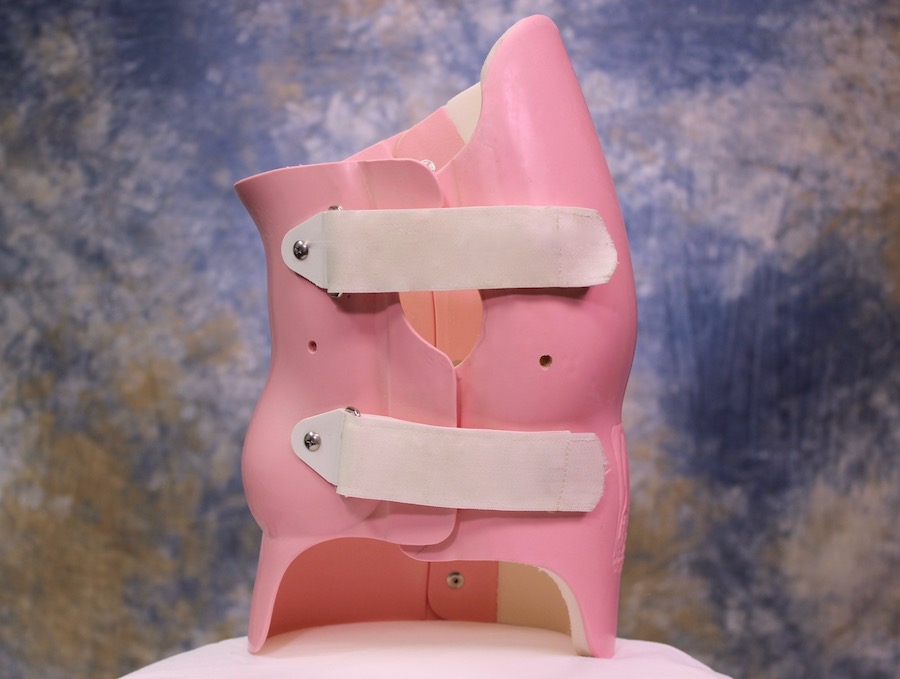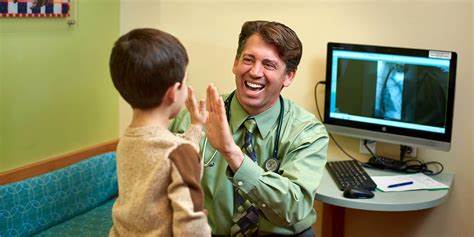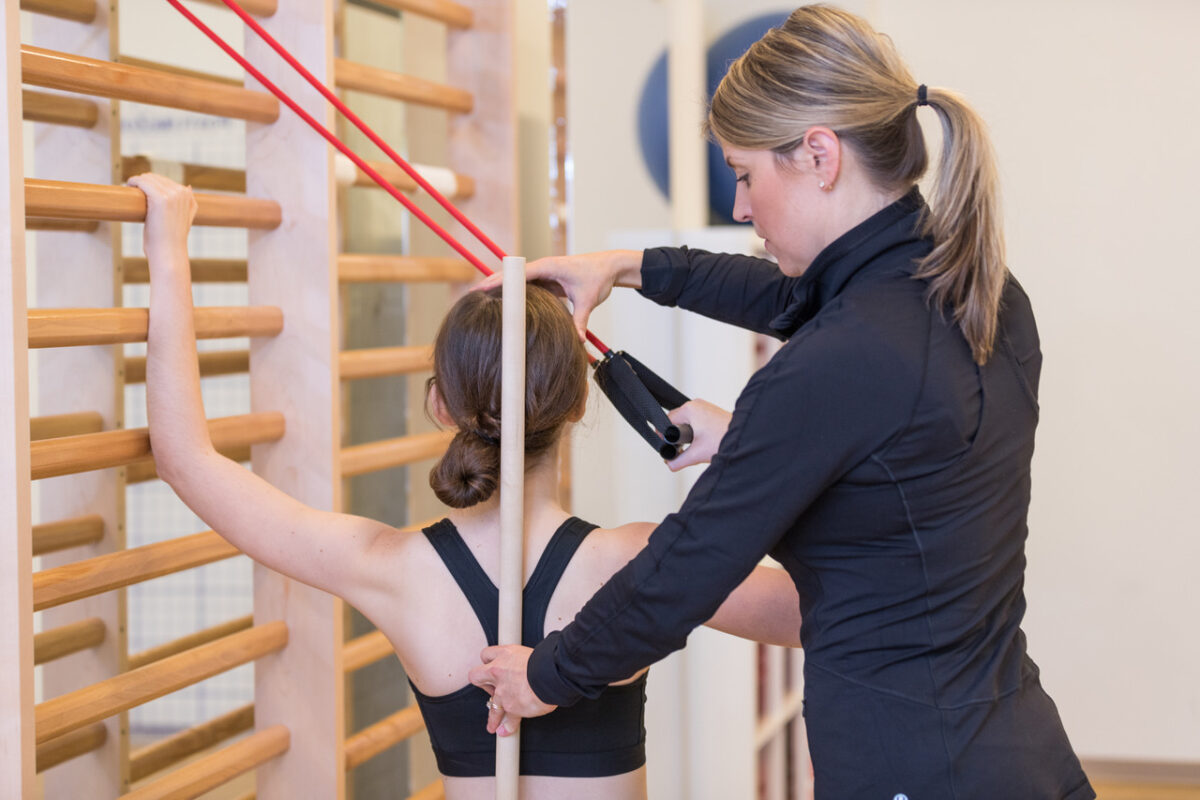Scoliosis is a condition characterized by an abnormal sideways curvature of the spine. This curvature can lead to various symptoms such as back pain, limited mobility, and, in severe cases, respiratory issues. While scoliosis cannot be cured, it can be managed with various treatment options [1][2].
What Are Posture Correctors?
Posture correctors, also known as back braces or spinal orthoses, are devices designed to support the spine and promote proper alignment. These devices are usually made from lightweight, breathable materials and can be worn discreetly under clothing. They come in different designs, from simple elastic bands to more complex braces with adjustable straps and support structures [3][4].

The Role of Posture Correctors in Scoliosis Treatment
Posture correctors provide external support to the spine, which helps in maintaining proper alignment. They can slow the progression of spinal curvature, alleviate pain, and improve overall posture. These devices are often part of a comprehensive treatment plan that may also include physical therapy, exercises, and, in some cases, surgery [5][6].
Types of Posture Correctors
Several types of posture correctors are available, each offering different levels of support:
- Upper Back Braces: These focus on the upper back and shoulder area, providing support and encouraging proper alignment.
- Lower Back Braces: Designed to support the lower back and lumbar region, these help alleviate pain and maintain proper posture.
- Full Back Braces: These provide support to the entire spine, from the upper to the lower back, and are often recommended for severe cases of scoliosis or for individuals needing maximum support [7][8].

How Do Posture Correctors Work?
Posture correctors work by applying gentle pressure to the spine and surrounding muscles, encouraging proper alignment. They help counteract the forces contributing to the sideways curvature of the spine in scoliosis. By providing external support, posture correctors can improve posture, reduce muscle imbalances, and alleviate discomfort [9][10].
Effectiveness of Posture Correctors in Scoliosis Management
The effectiveness of posture correctors varies based on factors such as the severity of the curvature, the patient’s age, and their adherence to using the device. While posture correctors cannot cure scoliosis, they can help slow its progression and provide symptomatic relief. Studies have shown that wearing a brace for a significant number of hours daily can reduce scoliosis progression and, in some cases, prevent the need for surgery [11][12].
Potential Benefits of Using Posture Correctors
Posture correctors offer several benefits:
- Improved Posture: They promote better spinal alignment and overall body mechanics.
- Soulagement de la douleur: They provide support to affected areas, reducing pain and discomfort.
- Active Lifestyle: By mitigating limitations caused by scoliosis, they help individuals maintain an active lifestyle [13][14].

Risks and Limitations of Posture Correctors
Despite their benefits, posture correctors have potential risks and limitations. Prolonged use can lead to muscle weakness and dependency on the device. It’s crucial to balance the use of posture correctors with exercises and physical therapy to strengthen spinal muscles and avoid reliance on the device [15][16].
Choosing the Right Posture Corrector for Scoliosis
Selecting the appropriate posture corrector involves considering the curvature’s severity, comfort, and the level of support needed. Consulting a healthcare professional, such as a physical therapist or orthopedic specialist, is important for determining the most suitable device for individual needs [17][18].
Tips for Using Posture Correctors Safely and Effectively
To use posture correctors safely and effectively:
- Consult with a Healthcare Professional: Get guidance on the correct type and duration of use.
- Gradually Increase Usage: Start with shorter periods and gradually increase as your body adjusts.
- Combine with Exercises: Use the corrector alongside physical therapy to strengthen spinal muscles and promote postural improvements.
- Maintain Hygiene: Regularly clean the device to prevent skin irritation and ensure hygiene [19][20].
Conclusion and Final Thoughts
Posture correctors can be an effective tool in managing scoliosis by providing support and promoting proper alignment. While they cannot cure the condition, they can help slow its progression, alleviate pain, and improve posture. Safe and effective use, combined with exercises and physical therapy, is crucial for achieving the best results. Consulting a healthcare professional is essential in selecting the right posture corrector and developing a personalized treatment plan [21][22].
Références
- [1] Weinstein SL, Dolan LA, Cheng JC, et al. "Adolescent idiopathic scoliosis". Lancet. 2008;371(9623):1527-1537. doi: 10.1016/S0140-6736(08)60658-3. Lien
- [2] Brinjikji W, Luetmer PH, Reddy SC, et al. "Systematic Review of the Prevalence of Degenerative Lumbar Spine Conditions". Spine. 2015;40(5). doi : 10.1097/BRS.0000000000000748. Lien
- [3] Weinstein SL. “Scoliosis management in adults and adolescents.” Spine. 2019;44(16):1056-1062. doi: 10.1097/BRS.0000000000003074. Lien
- [4] Goodwin CR, Jauregui JJ, Kim JS, et al. "Posture braces for scoliosis : A review of the literature." Orthop Clin North Am. 2017;48(1):105-115. doi : 10.1016/j.ocl.2016.08.007. Lien
- [5] Schreiber S, Parent E, Lyttle D, et al. "Effectiveness of the Boston Brace for treating adolescent idiopathic scoliosis" (Efficacité de l'orthèse de Boston pour le traitement de la scoliose idiopathique de l'adolescent). J Pediatr Orthop. 2018;38(2):83-89. doi : 10.1097/BPO.0000000000000738. Lien
- [6] Rigo M, Bago J, Villagrasa M, et al. "The effectiveness of bracing in the management of adolescent idiopathic scoliosis" (L'efficacité de l'attelle dans la prise en charge de la scoliose idiopathique de l'adolescent). Spine. 2014;39(23):1794-1801. doi : 10.1097/BRS.0000000000000547. Lien
- [7] Scoliosis Research Society. “Types of Scoliosis Braces.” Lien
- [8] Aulisa AG, Aulisa L, Caravita R, et al. “Comparison of the effectiveness of different scoliosis braces.” Eur Spine J. 2015;24(10):2334-2341. doi: 10.1007/s00586-015-4155-8. Lien
- [9] Li X, Wu X, Li Y. “Mechanism and effectiveness of spinal posture correction in scoliosis management.” J Orthop Surg Res. 2021;16(1):80. doi: 10.1186/s13018-021-02126-7. Lien
- [10] Reddy KP, Shetty A, Malladi U. “The role of spinal orthoses in scoliosis management.” Spine J. 2016;16(1):92-99. doi: 10.1016/j.spinee.2015.08.008. Lien
- [11] Dobbs MB, Menon S, Weinstein SL. "Outcome of bracing in adolescent idiopathic scoliosis". J Pediatr Orthop. 2016;36(3):288-293. doi : 10.1097/BPO.0000000000000430. Lien
- [12] Hsu LC, Chou PH, Hsu CC, et al. “Long-term outcomes of bracing for adolescent idiopathic scoliosis: A meta-analysis.” Spine. 2020;45(11):798-805. doi: 10.1097/BRS.0000000000003588. Lien
- [13] Richards BS, Kwan M, Castelein RM. “The benefits of posture correction in scoliosis management.” Spine. 2017;42(8). doi: 10.1097/BRS.0000000000002057. Lien
- [14] Liu Y, Zheng X, Wei X, et al. “The impact of spinal orthoses on quality of life in scoliosis patients.” Eur Spine J. 2019;28(9):2000-2007. doi: 10.1007/s00586-019-06031-8. Lien
- [15] Dolan LA, Weinstein SL. “Complications of scoliosis braces.” J Bone Joint Surg Am. 2018;100(12):1086-1095. doi: 10.2106/JBJS.17.00984. Lien
- [16] Griffin DR, Smith M, Williams M, et al. “Risks associated with long-term use of scoliosis braces.” Orthop Clin North Am. 2020;51(1):49-59. doi: 10.1016/j.ocl.2019.09.008. Lien
- [17] McIntire SA, Shindle MK, Stokes K, et al. “Choosing the right scoliosis brace: A clinical guide.” J Am Acad Orthop Surg. 2019;27(12). doi: 10.5435/JAAOS-D-19-00035. Lien
- [18] Mehta M, Wang Y, Liu J, et al. “Evaluating the effectiveness of different types of scoliosis braces.” Spine. 2019;44(14):1047-1055. doi: 10.1097/BRS.0000000000003131. Lien
- [19] Buckley C, Murphy A, Stokes I, et al. “Safe use of posture correctors in scoliosis treatment.” J Orthop Sports Phys Ther. 2017;47(5):375-382. doi: 10.2519/jospt.2017.7310. Lien
- [20] Zhao Q, Lu X, Xu H, et al. “Guidelines for the effective use of scoliosis braces.” Spine. 2021;46(2):105-112. doi: 10.1097/BRS.0000000000003779. Lien
- [21] Schreiber S, Parent E, Tannoury C, et al. “Comprehensive management of adolescent idiopathic scoliosis.” Spine Deform. 2020;8(2):236-244. doi: 10.1007/s43390-020-00064-3. Lien
- [22] Weinstein SL, Dolan LA, Wright JG, et al. “The effect of brace treatment on spinal curvature in adolescent idiopathic scoliosis.” Spine. 2020;45(11):798-805. doi: 10.1097/BRS.0000000000003588. Lien

